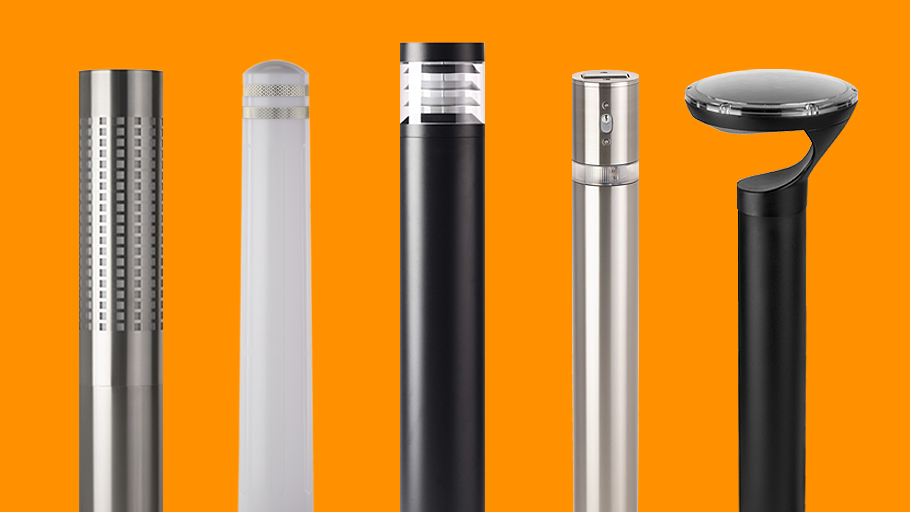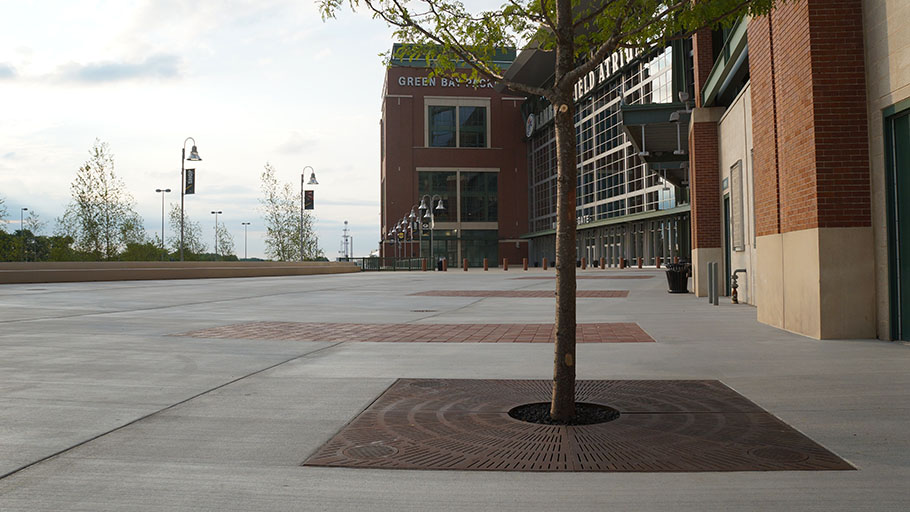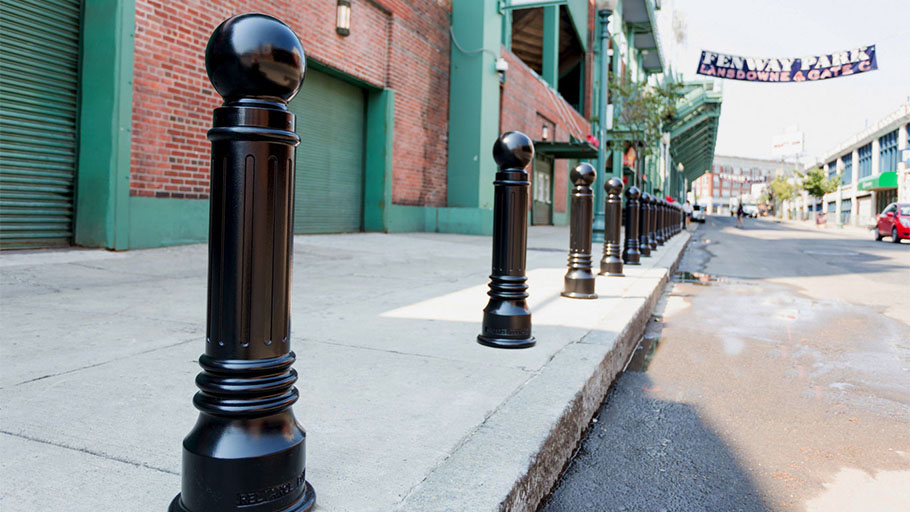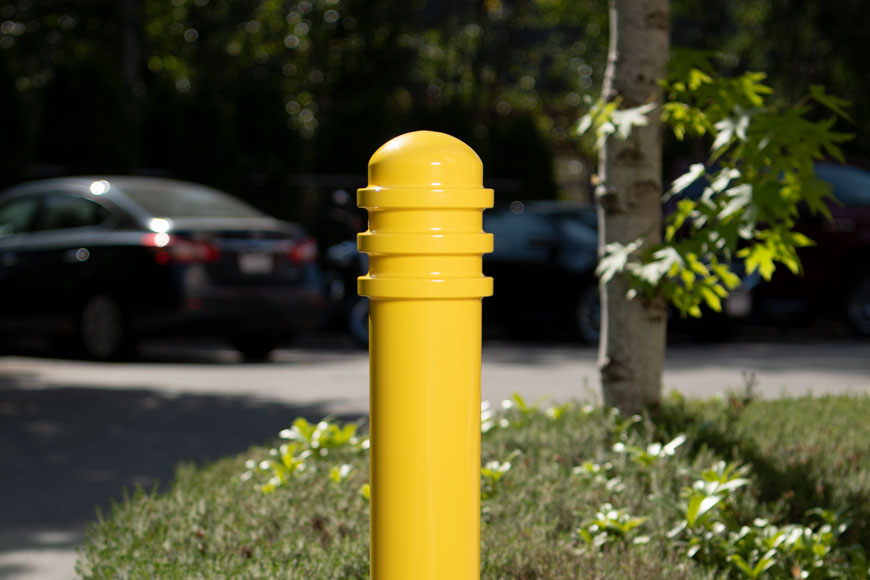Outdoor furnishings create inviting spaces for leisure and social interaction
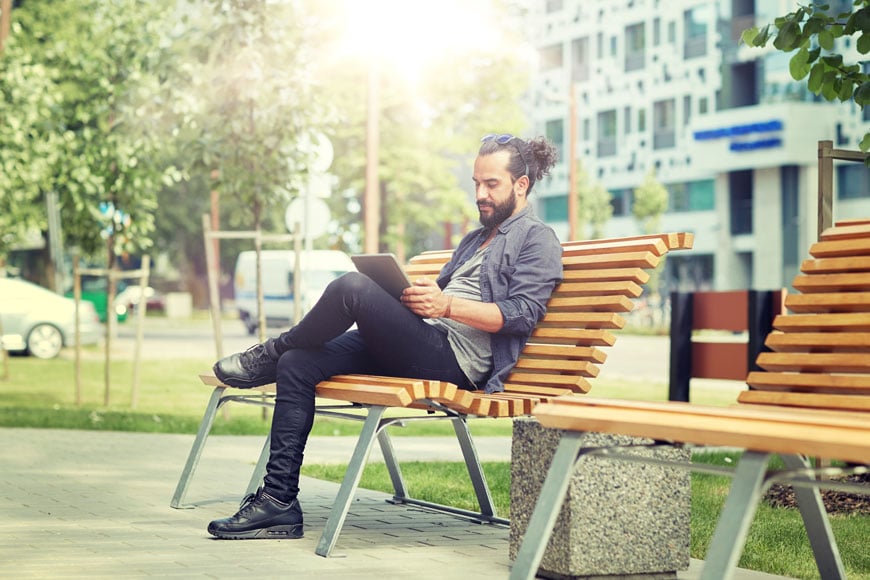
Social interaction is something we take for granted in our modern, fast-paced lives. Our interconnectedness—through, mobile phones, text messaging, email and social media—makes us feel closer to each other than ever. But as our remote capabilities increase, our face-to-face relationships suffer. In this post, we’ll look at how site furnishings and the architecture of space can foster better social landscapes.
What are site furnishings?
Site furnishings make spaces more comfortable for users. When planned properly, they create dynamic spaces that enhance social engagement.
Types of site furnishings
- Seating: benches, chairs, stools
- Tables
- Trash bins
- Shade structures
- Bollards
- Bike racks
- Planters
- Lighting
- Signage and other wayfinding elements
Where site furnishings are used
- Streets
- Plazas
- Parks
- Courtyards
- University campuses
- Trails
- Retail centers
- Health care facilities
- Civic spaces
Furnishings, specifically outdoor site furnishings, create spaces to sit and dwell. For example, seating and tables create identifiable places to gather, spend time, and socialize. But, furnishings also establish order. Trash bins and cigarette urns encourage clean and tidy environments for better enjoyment. Bike amenities prevent clutter from impromptu parking against trees, signs, and fences. Lighting and signage establish better visibility and clear navigation. Bollards can also protect pedestrians from the calamity of heavy traffic.
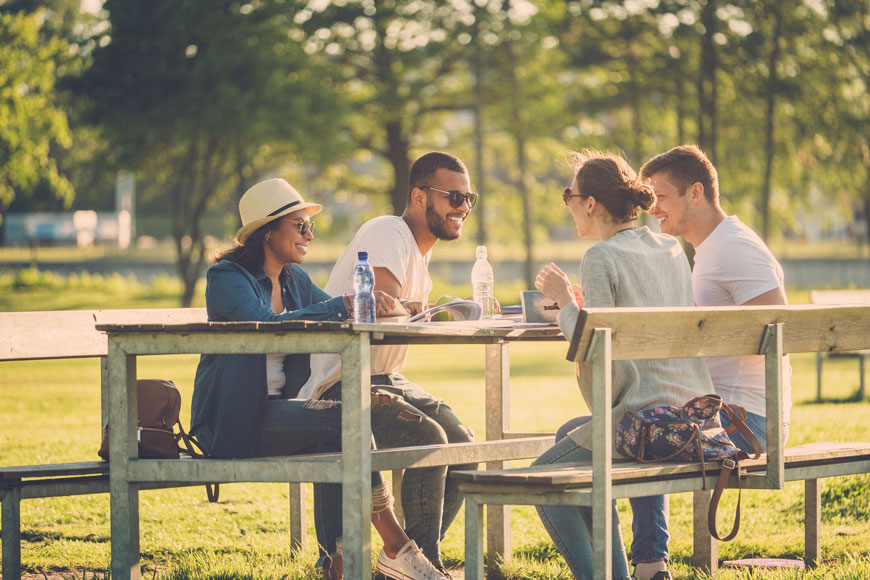
Designing for social space
In a recent study at Oregon Health & Science University, researchers looked at how face-to-face interactions can influence mental health and depression. The study looked at social connections of 11,000 participants 50 years or older over the course of two years. The result? Those who had fewer face-to-face interactions had double the risk of depression—while, the amount of phone or other electronic communication had no effect.
Another study from last year found that having a place to interact—in this case, sitting around a fire—could have very well influenced the evolution of our species. The findings show that sitting around a fire provides a “social nexus” for promoting relaxation and social interaction. Whether it’s the sizzle and crack of burning timber, the sway and lurch of the open ocean, or the laughter of nearby children, site design communicates subtle cues for users.
In other words, bringing people together is good for us and supports our natural inclinations. But, while most may take for granted a well-designed landscape, there’s a lot of planning that goes into making these spaces work for people. When planned and implemented well, site furnishings create efficient social spaces that satisfy functional, aesthetic, social, and emotional goals.
Identify what suits the surrounding landscape
Furnishings offer a creative opportunity to establish identity and character
Rather than being an afterthought, or a “finishing touch,” site furnishings should be considered early in a project. As with other architectural design elements, furnishings offer a creative opportunity to establish a sense of identity and character. Some questions to ask when planning a project:
- How will your furnishings reflect the character or identity intended for a space?
- How will your furnishings welcome or draw people from the surrounding environment?
- How will your furnishings support social activity and interaction?
- How will your furnishings create visual order and orientation?
Aspects such as shape, texture, color, and material can have a significant impact on how open spaces reflect and complement surrounding building designs. How well and how often people use an environment is a good indicator of success.
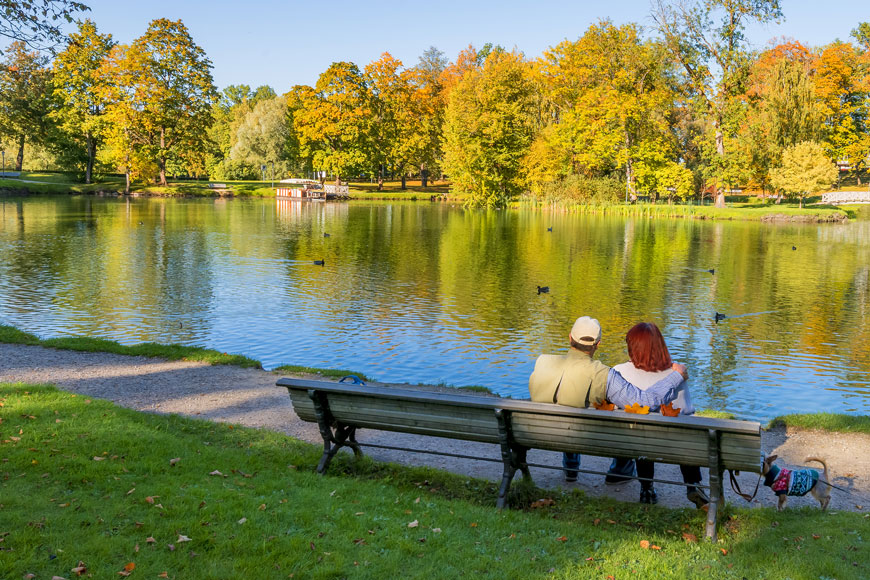
Proximity and orientation
When designing a layout for landscape furnishings, consider how people will use the surrounding space—and how certain arrangements are likely to be received by users.
Proximity: Outdoor furnishing arrangements can influence and encourage interaction among users. Seating spaced far apart creates privacy and contemplation, while close arrangements encourage interaction.
Orientation and hierarchy of space: As humans, many of us are predisposed to face open spaces—rather than have our backs to them. Some might argue this has to do with our fight or flight instincts instilled in us from ancestral days roaming the open savanna. We feel safer when we’re able to observe what’s around us. People also enjoy stimulating environments—whether they involve watching others or taking in surrounding architecture or landscapes.
Orientation can affect interactions. A long, uninterrupted line of benches can make it difficult for large groups to gather together but will encourage chance encounters between individuals or small groups sitting beside each other. Face-to-face seating supports larger group interactions but may be less comfortable for individual strangers.

Know your neighborhood
Even the best-laid plans fall flat if they don’t consider the people they’re meant to accommodate. Who lives nearby? What do residents expect from their neighborhood? What do they like to do? Knowing who you want to attract can go a long way.
- Families with children and pets—carrying diaper bags and pushing strollers—need safe, open spaces free from traffic.
- Active types who enjoy walking, running, cycling, and other forms of outdoor exercise will look for designated routes to get them where they want to go.
- Business people on smartphones or laptops need clean seating areas—and convenient surfaces to put their coffees.
- Tourists are attracted to visually engaging environments, but may need wayfinding elements to avoid getting lost.
Neighborhood history can also shape expectations. New developments often prioritize clean textures and open spaces. Historical areas may contain rich architectural traditions that should be maintained. Transitional neighborhoods can be challenging to design for, as there may be competing interests between long-time residents and the influx of new demographics.
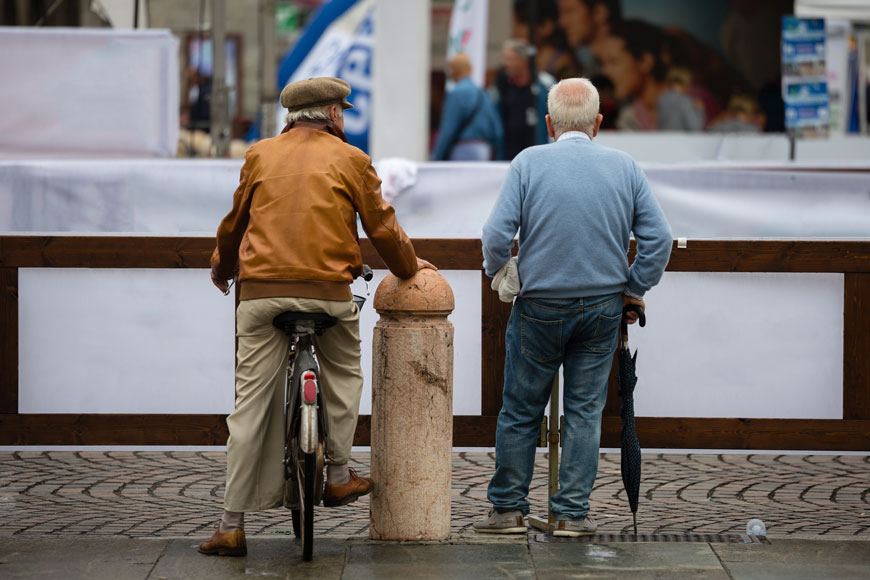
Environmental considerations
There are climate and environmental factors to consider when planning site furnishing layouts. These factors create both challenges and opportunities.
Local sun patterns will affect an environment throughout the course of a day and between seasons. In large urban centers, for example, tall buildings may obstruct direct sunlight for most of the day. During hot summers, people seek shade during the warmest hours. During cooler mornings and evenings, however, natural light may be more desirable. Depending on how they’re placed, furnishing arrangements can capture sunlight when desired and offer cover when trying to avoid it.
Wind can be a big factor for site users. A gust of wind may be enjoyable on an open waterfront, but in a city, where large buildings can create large wind tunnels, people will appreciate the refuge of a calm environment. Low walls or hedges can block wind to create more inviting environments for seating areas.
Rain can be a challenge for outdoor environments, especially during cold and windy seasons. In these situations, shade structures can also double as protective overhangs to keep people dry.
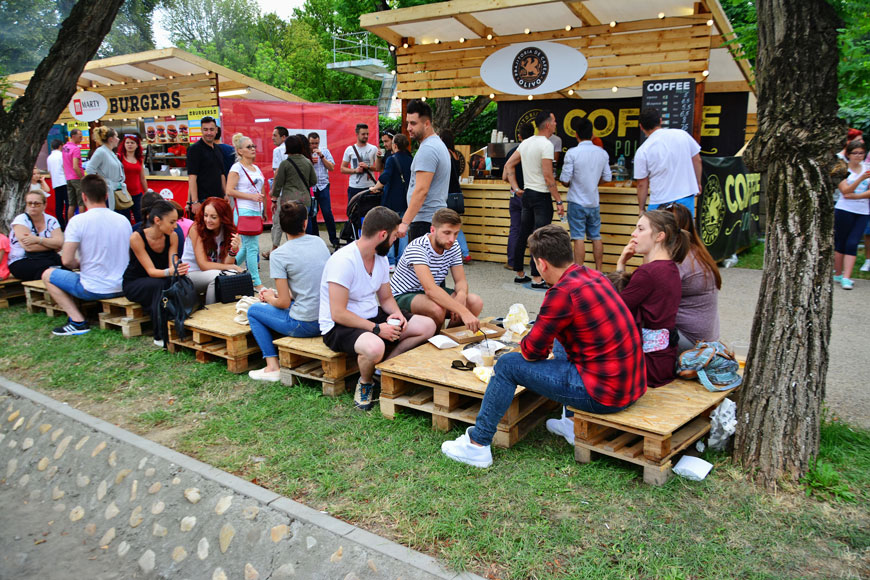
Trends in urban social space
Our cities and urban spaces are part of our broader, ongoing cultural evolution. As people and technology change, so do our expectations for the physical spaces around us.
Urbanization/revitalization: Modern city developments prioritize diversity, walkability, live/work balance, and late-night social scenes. Buildings are being designed for higher densities, and neighborhoods are zoned to accommodate street-side businesses that welcome public leisure and interaction. Street festivals and other use of public space is encouraged. From a user’s point of view, there may be less distinction between public and private—and more opportunities for interaction between sectors.
Environmental sustainability: With increased greenhouse gas emissions and higher gas prices, more people use public transportation, as well as other alternatives such as walking and biking. This means people are spending more time outside—looking for safe, comfortable spaces to enjoy while waiting for the bus or in the midst of a daytime commute.
Portable technology: The development of smartphones, portable laptops, and public Wi-Fi means people can get a lot more done while commuting or taking lunch outside. We don’t need to be chained to our desks to respond to emails or to participate in a conference call or web meeting.
Selecting outdoor site furnishings
Outdoor site furnishings typically must withstand exposure to the elements of their surrounding landscape. Cost and durability are likely major factors for selecting products, but knowing additional application details is important. Simple, fixed designs can be easier to install and maintain and can require less planning, but movable furniture can be more adaptable. It’s also necessary to take into account long-term value and the availability of replacement parts. Saving a few dollars in the short term may result in higher costs for repair or replacement in the future.

